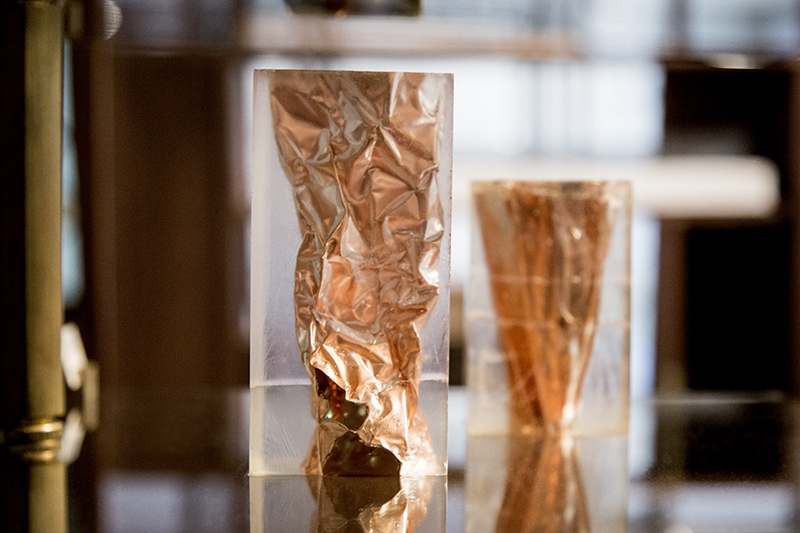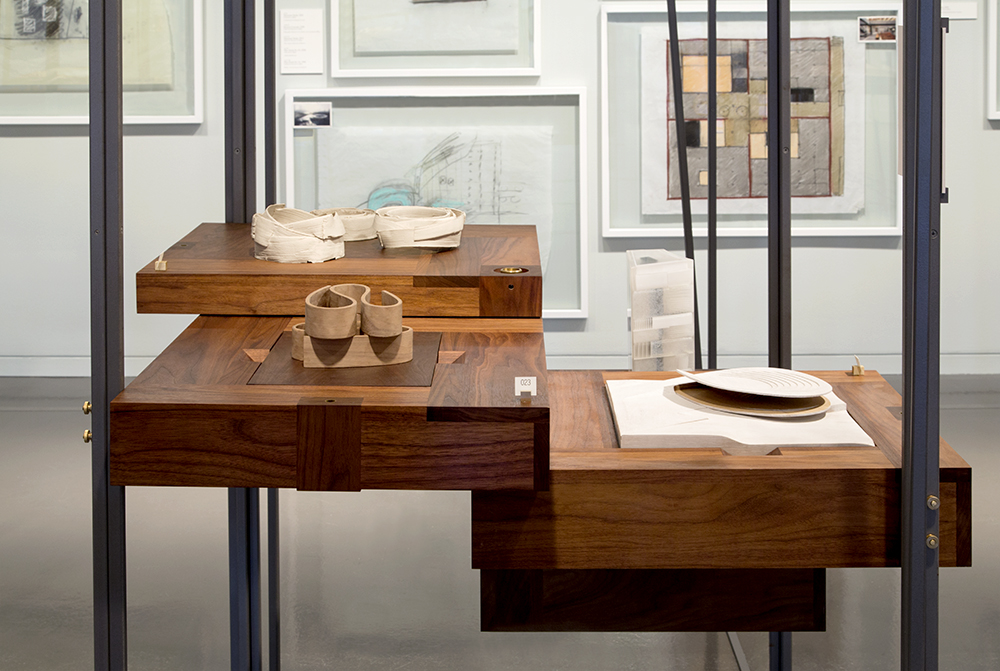Case Work Essay Excerpt—Brad Cloepfil
View projectFeb 5, 2016
Case Work
Brad Cloepfil
Case Work presents objects and sketches produced as a means of exploration liberated from the quest for a resultant product, acts of creation whose very intent is to inspire subsequent investigation. It offers a counterpoint to a profession that has become increasingly defined by the production of imagery, a practice of conjuring buildings as objects intended to sell rather than investigate and propose.
The works included in this exhibition embody moments in a perceptual conversation, where the particular medium—charcoal, pencil, wood, glass, or steel—is chosen for its physical potential and for its ability to communicate an elemental nature. At their best, they are evocations of an idea—of binding a building to a site, of splitting a mass open for light, of bridging a park to the surrounding city. Taken together, they are catalysts for new inquiry and ideas about architecture, experience, and making that are the precursors to buildings. In their abstraction, these works initiate discourse on site, space, the nature of structure and experience.
This is hybrid investigation, intended to elicit ideas and kindle possibilities. They are not intended as artifacts, yet they occupy a borderland. The objects in the exhibition linger on the edge of representation.
The installation for Case Work presents an open field of frames and thresholds, scaling the gallery and containing a series of ten different toolboxes. The frames provide a bridge between the boxes and the observer, suspending the cases, which hold the products of our varied investigations—the iterative studies and tools we use to develop our ideas for building.
To read the full essay, the Case Work catalog is currently on sale
at the Denver Art Museum and available online here.
The 72-page catalog was designed by Juliette Cezzar, and published by Metropolis Books.



Case Work
Brad Cloepfil
Case Work presents objects and sketches produced as a means of exploration liberated from the quest for a resultant product, acts of creation whose very intent is to inspire subsequent investigation. It offers a counterpoint to a profession that has become increasingly defined by the production of imagery, a practice of conjuring buildings as objects intended to sell rather than investigate and propose.
The works included in this exhibition embody moments in a perceptual conversation, where the particular medium—charcoal, pencil, wood, glass, or steel—is chosen for its physical potential and for its ability to communicate an elemental nature. At their best, they are evocations of an idea—of binding a building to a site, of splitting a mass open for light, of bridging a park to the surrounding city. Taken together, they are catalysts for new inquiry and ideas about architecture, experience, and making that are the precursors to buildings. In their abstraction, these works initiate discourse on site, space, the nature of structure and experience.
This is hybrid investigation, intended to elicit ideas and kindle possibilities. They are not intended as artifacts, yet they occupy a borderland. The objects in the exhibition linger on the edge of representation.
The installation for Case Work presents an open field of frames and thresholds, scaling the gallery and containing a series of ten different toolboxes. The frames provide a bridge between the boxes and the observer, suspending the cases, which hold the products of our varied investigations—the iterative studies and tools we use to develop our ideas for building.
To read the full essay, the Case Work catalog is currently on sale
at the Denver Art Museum and available online here.
The 72-page catalog was designed by Juliette Cezzar, and published by Metropolis Books.